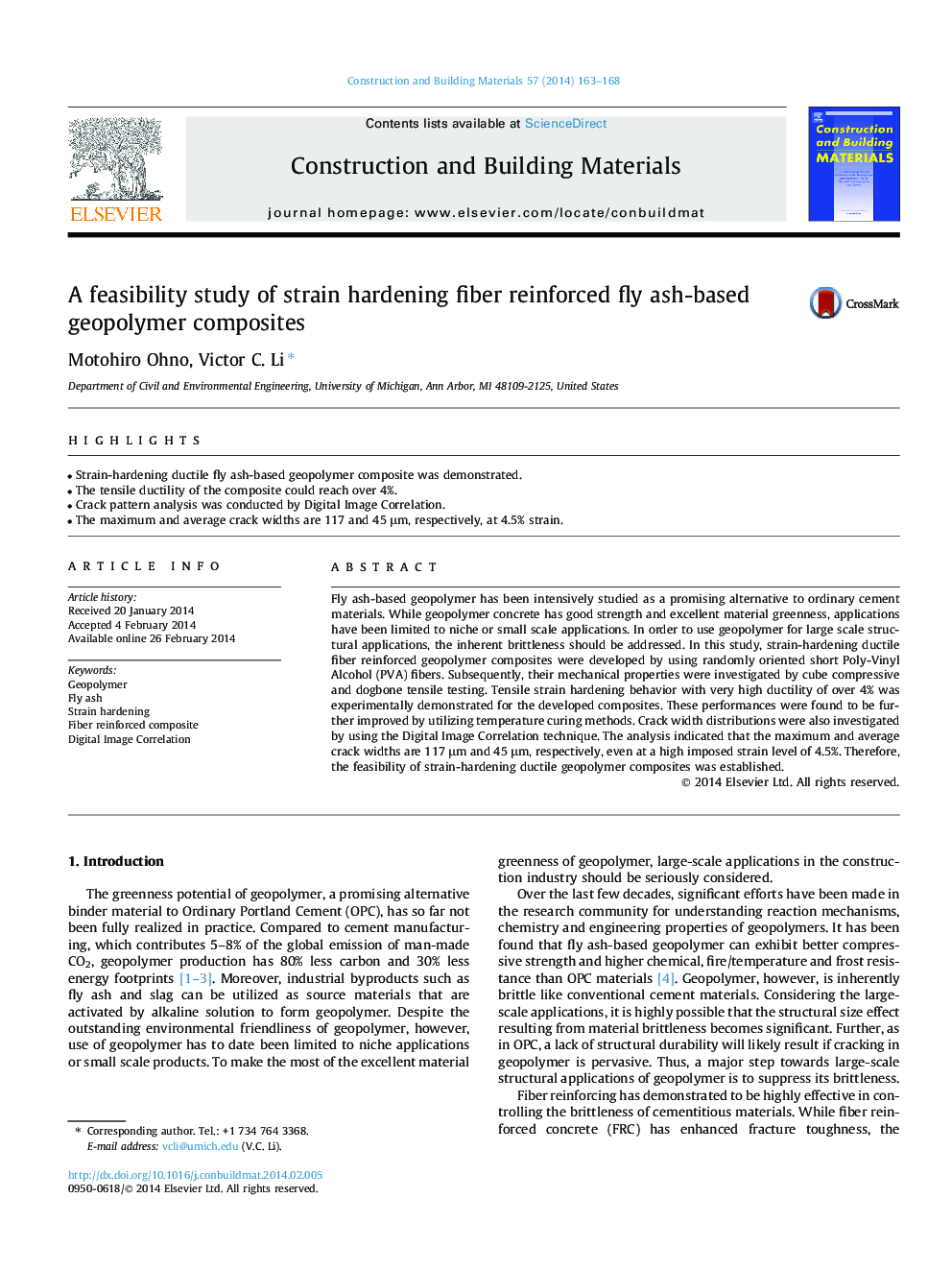| Article ID | Journal | Published Year | Pages | File Type |
|---|---|---|---|---|
| 258014 | Construction and Building Materials | 2014 | 6 Pages |
•Strain-hardening ductile fly ash-based geopolymer composite was demonstrated.•The tensile ductility of the composite could reach over 4%.•Crack pattern analysis was conducted by Digital Image Correlation.•The maximum and average crack widths are 117 and 45 μm, respectively, at 4.5% strain.
Fly ash-based geopolymer has been intensively studied as a promising alternative to ordinary cement materials. While geopolymer concrete has good strength and excellent material greenness, applications have been limited to niche or small scale applications. In order to use geopolymer for large scale structural applications, the inherent brittleness should be addressed. In this study, strain-hardening ductile fiber reinforced geopolymer composites were developed by using randomly oriented short Poly-Vinyl Alcohol (PVA) fibers. Subsequently, their mechanical properties were investigated by cube compressive and dogbone tensile testing. Tensile strain hardening behavior with very high ductility of over 4% was experimentally demonstrated for the developed composites. These performances were found to be further improved by utilizing temperature curing methods. Crack width distributions were also investigated by using the Digital Image Correlation technique. The analysis indicated that the maximum and average crack widths are 117 μm and 45 μm, respectively, even at a high imposed strain level of 4.5%. Therefore, the feasibility of strain-hardening ductile geopolymer composites was established.
